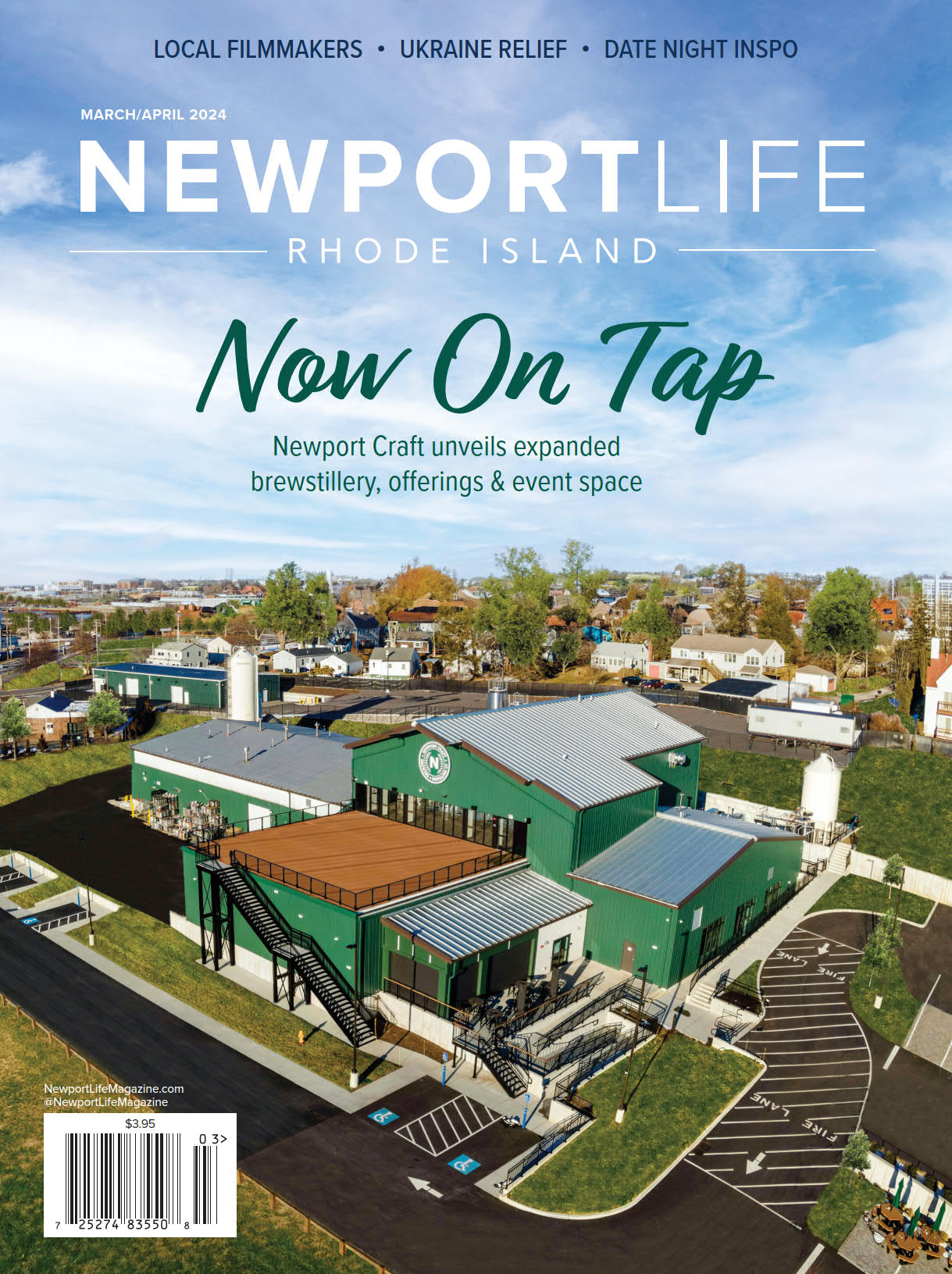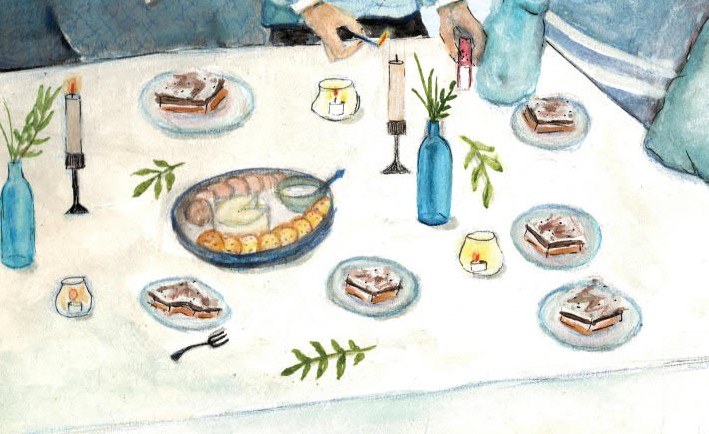A Taste for Remembrance
By Andrea E. McHugh
The holidays can be difficult for many, but preparing traditional family recipes with friends lends a bit of joy
“Food is everything we are. It’s an extension of nationalist feeling, ethnic feeling, your personal history, your province, your region, your tribe, your grandma. It’s inseparable from those from the get-go.”
—Anthony Bourdain
Food connects us to our past; from whence we came.
From meticulously inscribed recipes handed down through generations to gathering with family (or “framily”) to make everything from hors d’oeuvres, main dishes and desserts to the cookware we use to make it; the serveware we use to plate it, and the dinnerware we use to set the scene, food and the dining experience, perhaps especially most during the holidays, food connects us to our sense of place, our cultures, our communities and the world around us.
And just one bite can undoubtedly spark a treasured memory, transport you back to a moment of your youth, or instantly fill your heart with the bittersweet memories of a loved one.
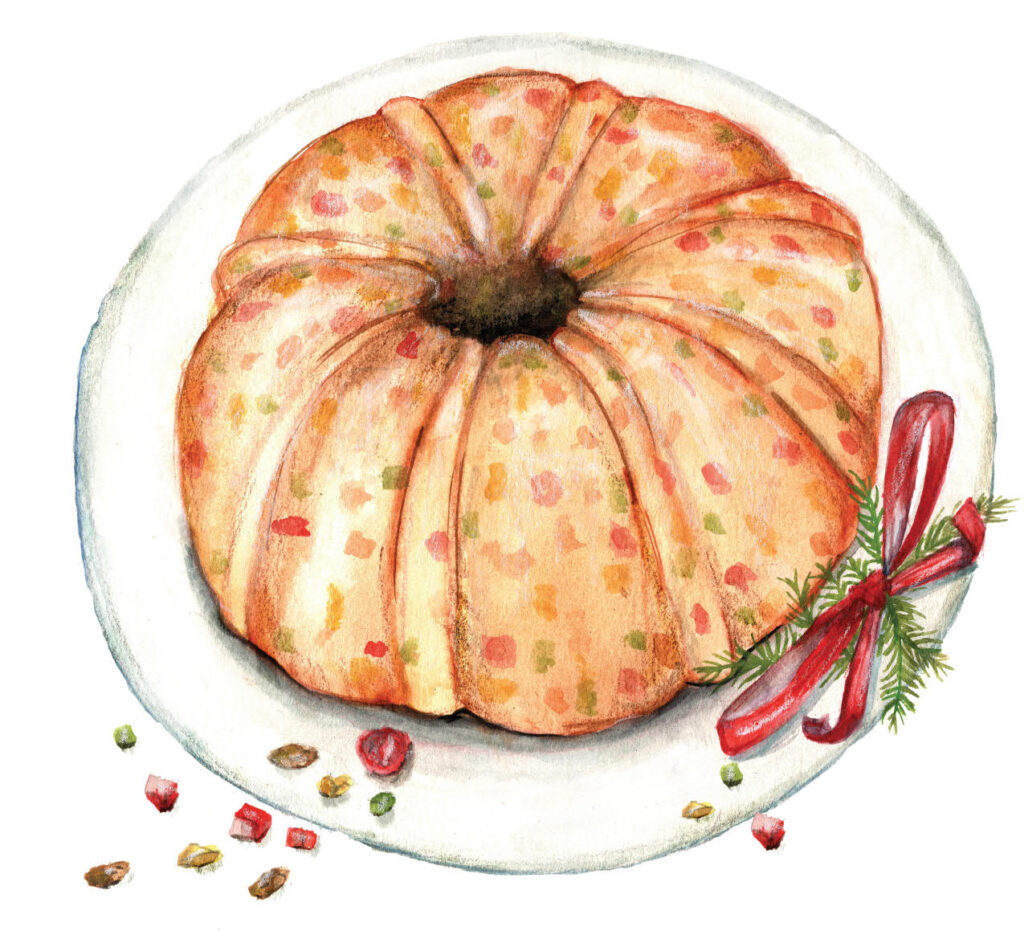
A four-generation fruitcake
Despite having a recipe that dates back four generations, it took pastry chef Victoria Bertapelli-Kenyon substantial trial and error to perfect her family’s holiday fruitcake, but it was well worth the effort.
“The recipes we have from my grandmother say things like, ‘A glassof wine,’ and it’s, ‘Okay Mae, exactly what size glass of wine are we talking about? Is it a 4-ounce, 6-ounce or an 8-ounce pour? Or was that your idea of a glass of wine?’” she says with a chuckle. “For a lot of immigrants, it was kind of that way. ‘A handful of flour.’ Again, is that my five-year-old niece’s handful of flour? My handful?”
Bertapelli-Kenyon enlisted the help of her twin sister to formulate the more than century-old fruitcake recipe with specific measurements, as their mother had a handwritten version of her mother’s, which originated from Bertapelli-Kenyon’s great grandmother. And then of course, are the ingredients.
“We’re talking things like pickled watermelon rinds, watermelon preserves— which are fantastic— and other details like the best place to buy the candied fruit and candied citron,” Bertapelli-Kenyon says.
The fruitcake was traditionally enjoyed around Christmastime.
Bertapelli-Kenyon says the women in her family historically began the fruitcake-making process in October, gathering the flour, butter, sugar, candied fruit, nuts, raisins and fruit brandy. The fruit would soak in wine, then, using “only enough cake batter to hold the fruit together,” the cakes would be baked and then aged.“
Then they’d take them downstairs and put them in a pan that had a towel, put the fruitcake on the towel, and then soak them in apricot brandy or Applejack. Applejack was the original, but my mom preferred the apricot brandy,” says Bertapelli-Kenyon. “You’d go down each week and pour on a little more alcohol, as it’d evaporate, then let it age, and by the time Christmas came, those things were awesome!”
Baking for her business, Vanilla Bean Pastry Studio, at Newport Cooks! in Middletown, where she also teaches baking classes, Bertapelli-Kenyon knows her way around a kitchen. This time of year, she makes about 100 of the family fruitcakes — named Ms. Gallagher’s Chesapeake Fruitcake — using 4-inch mini bundt cake pans and ships them to siblings, extended family and dear friends, adding with a laugh that the shipping costs add up as the cakes “weigh a ton.”
But it’s a labor of love.“
To share our fruitcake with other people is special,” she says. “I find that when you have these dishes that were traditional to your family, it keeps you grounded in a sense…Everyone can tell you something about a meal, or something they ate, that reminded them of someone who loved them, or who they really loved.
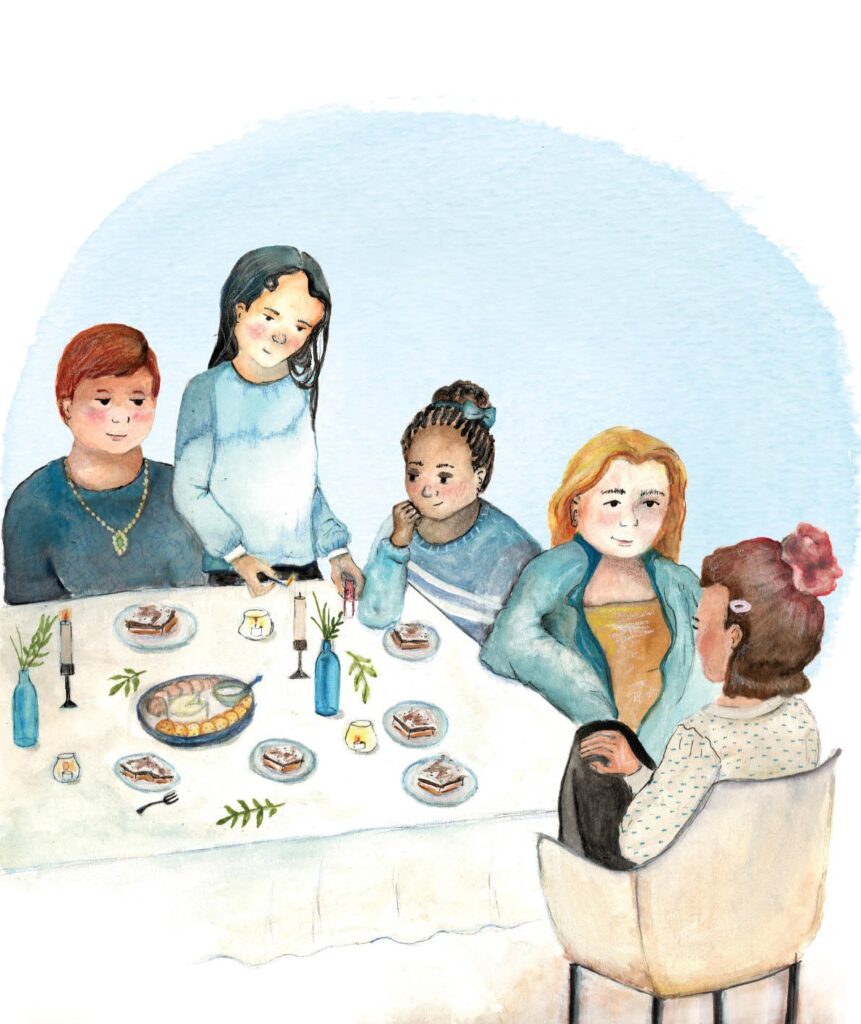
The Dinner Party
Sierra Strattner can wax poetic about food reminding her of someone she loved — specifically, her mother, whom she lost five years ago.
“I’m not that good at cooking, but I am good at baking. My mom made, and I think she’s the only one who calls it this, but it’s called Daphne Delight, and it’s a shortbread-bottomed cake with Cool Whip and chocolate pudding and chopped walnuts,” Strattner says. “She was a very simple cook and she would whip these desserts together, so I’ll make that sometimes.
It was a few months after her mother’s passing, when Strattner was living in Brooklyn, that a friend from her hometown of Newport suggested she look into The Dinner Party, a worldwide community of grieving 20-,30-, and early 40-somethings who have experienced loss.
The organization’s “Dinner Tables” can be found in more than 100 cities and towns and online.
Strattner started going to a Dinner Table near her home and quickly found her people. The organization’s website says, “We want to get you out of metal folding chairs in the church basement with people twice your age, and into something accessible, personal and maybe even fun.”
If you ask Strattner, it’s a promise they make good on.
“It’s really wild to, when you first start out, sit down with people you barely know and it’s so easy to be vulnerable. That’s really special,” she says. “It’s good to know there are people you can really trust with your emotions.”
When Strattner traded the bustle of the Big Apple for Newport’s tranquil shores with her wife Desiree Halaka, who had lost her father, the two decided to host Dinner Tables in their home and later, occasionally at their curated event space, Little Gold on Franklin Street.
“I was away for 14 years, so when I moved back, even though I grew up here, I didn’t feel like I had a community,” Strattner says. “We wondered if there’d be a need for the Dinner Table or if there’d be enough people to make it work, and slowly, I feel like we’re collecting people as we go.”
Food is the centerpiece of the monthly gatherings, with shared grief as their commonality. The evening is full of robust conversation and yes, sometimes tears.
“We just talk for hours, have really good food, good wine, and we’re crying and laughing and there is this communal understanding… there’s just something different when you’re talking to people on that level,” Strattner says.
This time of year, the Dinner Tables are especially comforting to many.
“The holidays can just suck when you’re missing someone, and be so, so triggering for people,” Strattner says.
But for those who take comfort in being around others during especially difficult times, making a dish and sharing it, and sharing a memory of a treasured loved one, can be an emotional game changer.
“It can be something really simple, like an hors d’oeuvre or maybe you make something your family would traditionally enjoy around the holidays or something your loved one maybe passed on to you, and those I feel like are some of our best nights,” she says, adding that when she and Halaka set the table for the gatherings, they use Strattner’s mother’s china. “[The Dinner Table] is the thing that has gotten me through the most, and you always have a seat at the table.
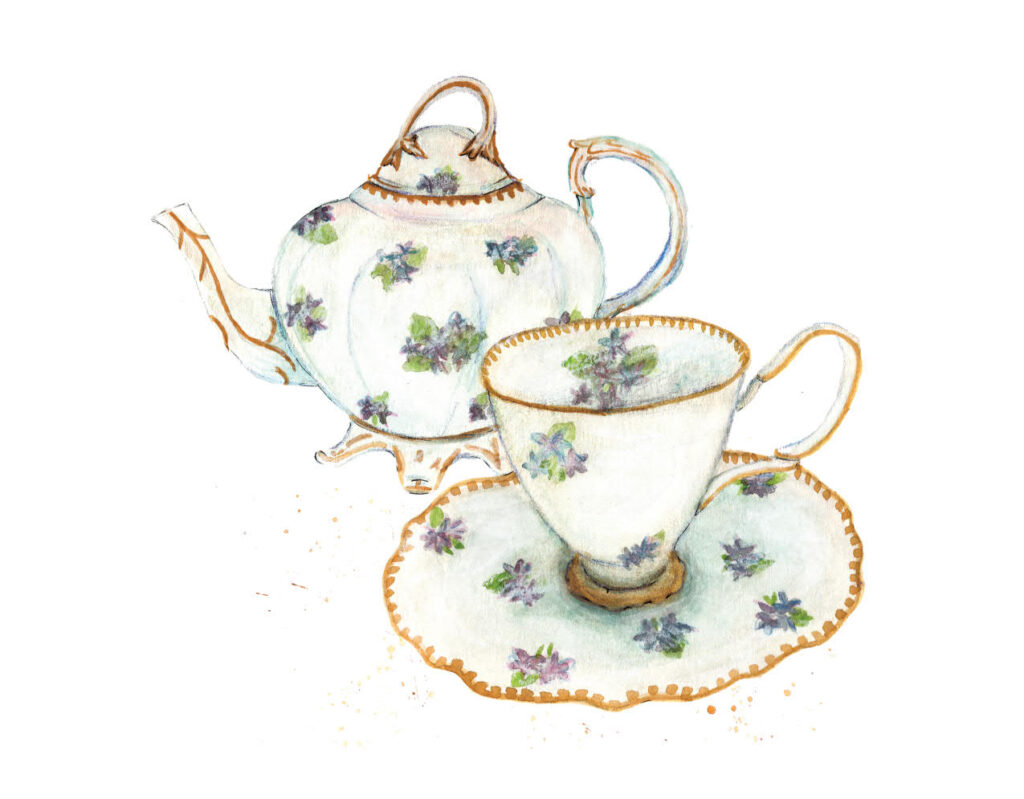
Grandmother’s fine china
Fine china has become one of Susanne Day’s most precious possessions, which is ironic. When she wed 13 years ago, she prided herself on her practicality.
“I resisted fine china as a modern bride. I registered at Crate and Barrel,” Day says.
But from the time she was a young child, she admired her Italian grandmother’s Royal Stafford bone china with the delicate “Sweet Violets” pattern locked safely away in her formal china cabinet.
“Every holiday, I remember we would do Thanksgiving and Christmas and Easter at my grandmother’s house,” Day says. “She’d say, ‘It’s time to set the table,’ and she had all these different sets of china, but I always had my eye on the violet china.”
Years later, quite some time after her grandmother had passed, Day, an avid cook along with her husband Jerry, still had her mind on that china.
“Something was calling to me that I was ready, and I asked my mom [who inherited it],” says Day. The couple lives in a classic Cape in Portsmouth, so they are thoughtful about space — and have little extra of it — but they were willing to make room for the sentimental set which also included the original coffee and tea cups, a teapot, creamer and sugar bowl, and salt and pepper shakers.
Today, that china is a staple when the Days enjoy Christmas and holiday meals— but that’s not all.
“We’re not waiting for something to celebrate; we’re celebrating regular life,” Day says. “I didn’t want to just look at them. I use it, I cherish it, and really love it. I feel a daily connection to her anyways, but pulling it out at the holidays makes it more special.”
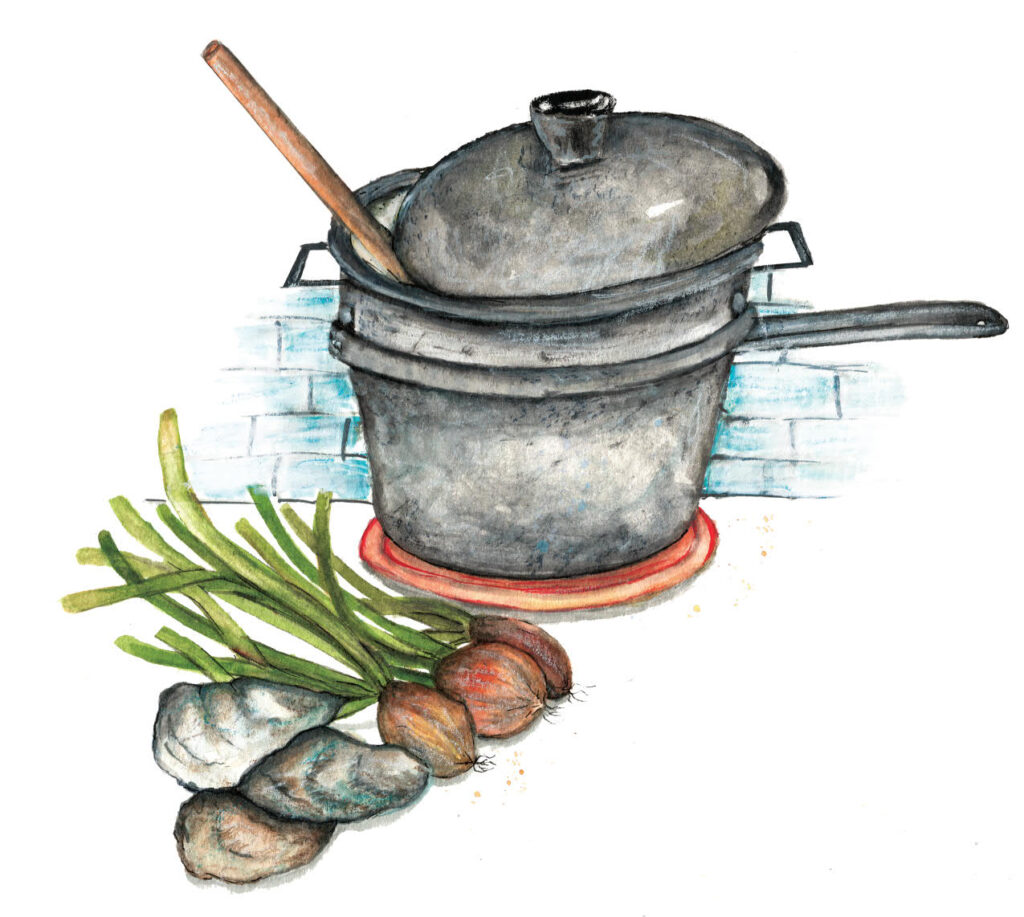
Oyster stew on Christmas Eve
For Newporter Charles Kehres, the holidays would be incomplete without savoring oyster stew made in the double boiler he inherited from his Aunt Marcia. The stew is a longtime Christmas Eve family tradition Kehres believes started with his grandmother.
“It really is the best thing ever in my mind for Christmas Eve, and I have taken it to many, many dinners now here intown,” Kehres said. “Every time I went to my Uncle Jim and Aunt Marcia’s house, she’d pretty much throw me the spoon and say, ‘You’re up! Just stay there for an hour stirring!’ She was my favorite aunt ever. She passed away, and I have never had an inheritance in my life, but my cousins came to me a couple months later and said, ‘You need to take the double boiler because you’re the only one who ever used it.” It’s in my kitchen now and I use it all the time.”
Kehres says the stew is simple. It’s made from butter, cream, shallots, oysters and salt and pepper. And while he concedes there’s nothing magical about the double boiler, which he say sis old, dented, and has easily had a good 50 years of use, the night before Christmas just isn’t the same without it.
“One year I got snowed out of going home to Ohio, and I freaked out,” Kehres says. “I thought, ‘I have to have Christmas Eve and I have to have oyster stew,’ and I said, ‘If I’m not going home, this is still going to happen.’ I remember driving around to like seven stores to find pints of oysters. But I made it. Even if I saw no one on Christmas Eve, it would still happen, because I love those memories, and I love my family.”
Illustrations by Hannah Stracensky
